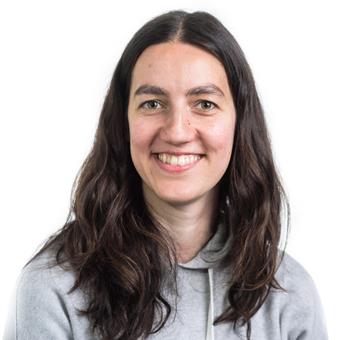Principal Investigator: Peter Olsén
Imagine a future where materials are based on abundant and relevant precursors, processed benignly, chemically recyclable with infinite recycling loops, and endowed with functions to perform tasks on demand. These are the guiding principles of the GPC group, which focuses on developing green synthetic chemistry methods for functional and sustainable biobased polymeric materials. Our research is highly multidisciplinary, covering polymer, organic, and biopolymer chemistry, with a central focus on the synthetic chemistry challenge. Our ambition is to always work from the initial building block or chemical problem all the way to the final application.
Green Polymer Chemistry (GPC)
Working at the interphase between Polymer Chemistry, Organic Chemistry, and Biopolymer Chemistry towards Functional and Sustainable Materials.
Research
Polymer Chemistry
Representative publications:
1. Macromolecules 2024, 57, 7, 3397–3406
2. Polym. Chem., 2023, 14, 2485-2493
3. Nat Commun. 2022, 13, 5666.
4. J. Mater. Chem. A, 2022, 10, 570-576
Organic Chemistry
Our strategy is developing new chemistry on bio-based platform molecules towards new functional and sustainable materials for targeted applications. It is important to remember that biobased precursors have a completely different build-up compared to petroleum resources; hence, the first step is to understand the inherent chemical features of the platform molecule and then harness that towards either new monomer synthesis or direct materials synthesis. Green chemistry and scalability are crucial to translating this to various applications. Our current focus is on Green Acrylation Chemistry, New Biobased Reactants, Transformations in Water, and using the Ring-Chain Equilibria for Monomer Synthesis.
Representative publications:
1. Adv. Sci., 2021, 8, 2100559
2. Nat. Commun. 2022, 13, 6924
3. Green Chem., 2018, 20, 3786-3190
4. Green Chem., 2018, 20, 469-475
Biopolymer Chemistry
Biopolymers contain many different chemical functionalities, such as primary and secondary alcohols, carboxylic acids, phenolic structures, whose content depend on the pre-treatment. Using these chemical handles to tailor the substrate to a specific application may appear straightforward. However, it is not as simple as it seems; the reactions occur under non-optimal chemical conditions in the presence of both water, oxygen, and small molecules. In addition, when performing chemical modification on substrates, such as macro and nanofibers, we must consider that the reaction occurs under heterogeneous conditions. Thus, the interplay between the reaction system design and the chemical accessibility of the substrates is crucial for the desired transformation to occur. We are currently exploring the fundamental chemical problems relating to cellulose modifications, translating lignin to material applications, as well as interphase tailoring of wood templates.
Representative publications:
1. Small. 2023, 13, 5666
2. ChemSusChem 2024, 17, e20230123
3. ACS Sustainable Chem. Eng. 2024, 12, 9, 3632–3642
4. Green Chem., 2020, 22, 8012-8023
Outreach
Press releases
Biobased transparent woodWood-plastic
Thermal wood battery
Interviews
Innovative building materials (adapteo.com)With these innovations, you’ll soon be living in a circular and sustainable home - IO (innovationorigins.com)
Esta madera transparente está hecha de cítricos – Metro World News
YouTube
Peter Olsén, KTH – Synthetic Strategies for Decorating Biopolymers with RingsWWSC Lignin webinars: Peter Olsén, WWSC/KTH – Lignin from a Polymer Synthetic Perspective
Popular Science Presentations
UR Samtiden - Forskar-Grand Prix 2014, UR PlayPublications
2025
 Continue to DOI
Continue to DOI
 Continue to DOI
Continue to DOI
 Continue to DOI
Continue to DOI
 Continue to DOI
Continue to DOI
 Continue to DOI
Continue to DOI
 Continue to DOI
Continue to DOI
 Continue to DOI
Continue to DOI
 Continue to DOI
Continue to DOI
 Continue to DOI
Continue to DOI
2024
 Continue to DOI
Continue to DOI
 Continue to DOI
Continue to DOI
 Continue to DOI
Continue to DOI
2023
 Continue to DOI
Continue to DOI
 Continue to DOI
Continue to DOI
 Continue to DOI
Continue to DOI
 Continue to DOI
Continue to DOI
 Continue to DOI
Continue to DOI
 Continue to DOI
Continue to DOI
2022
 Continue to DOI
Continue to DOI
 Continue to DOI
Continue to DOI
People
Collaboration
Wish to collaborate? Contact Peter Olsén directly: peter.olsen@liu.se
Current main external collaborations
Lars Berglund | KTH
Google Scholar Profile
polymers. With Karin, we work on project relating to chemical recycling and ring-
opening polymerization.
Karin Odelius | KTH
Semantic Scholar Profile
assembling soft matter. With Sergey, we work on project relating to solid state NMR.
Sergey Dvinskikh | KTH
Google Scholar Profile
biomolecular systems from a materials perspective. With Jakob, we collaborate
on molecular dynamics simulations of polymers for chemical recycling.
of cellulose-based nanomaterials. With Lars, we work on green fibre
modification and sustainable hydrogel materials.
(KTH, Chalmers, and Linköping University). The vision of WWSC is that the forest can offer bio-based alternatives to fossil-based materials. In Sweden, WWSC is the largest initiative in the field, engaging circa 50 PhDs and 20 postdocs.
Many members in our group become members of WWSC, providing them with a large research and
professional network that they can use in their future careers.
Join Us!
Open Positions
There are currently no open positions.Postdoctoral scholars
We always look for talented postdocs. If you are passionate chemist who likes to explore new concepts, please email Peter Olsén at peter.olsen@liu.se. Please include your CV, and a short description of your scientific interests. With strong candidates, we are happy to write joint proposals for postdoctoral programs such as the Marie Skłodowska-Curie Actions.PhD students
We hire PhD students through open calls, placed at the Linköping University job-pages.MSc students and undergraduate students
If you want to find a lab for your MSc thesis, or your ERASMUS project, we want to hear about your interests! We frequently offer suitable projects for undergraduates. Please contact Peter Olsén at peter.olsen@liu.se. Please include a copy of your CV, and a short description of your scientific interests.News
Funding
We are currently funded by:
Wallenberg Wood Science Center (WWSC)
Formas
Carl Trygger Foundation
Olle Engkvist Foundation
Åforsk Foundation



